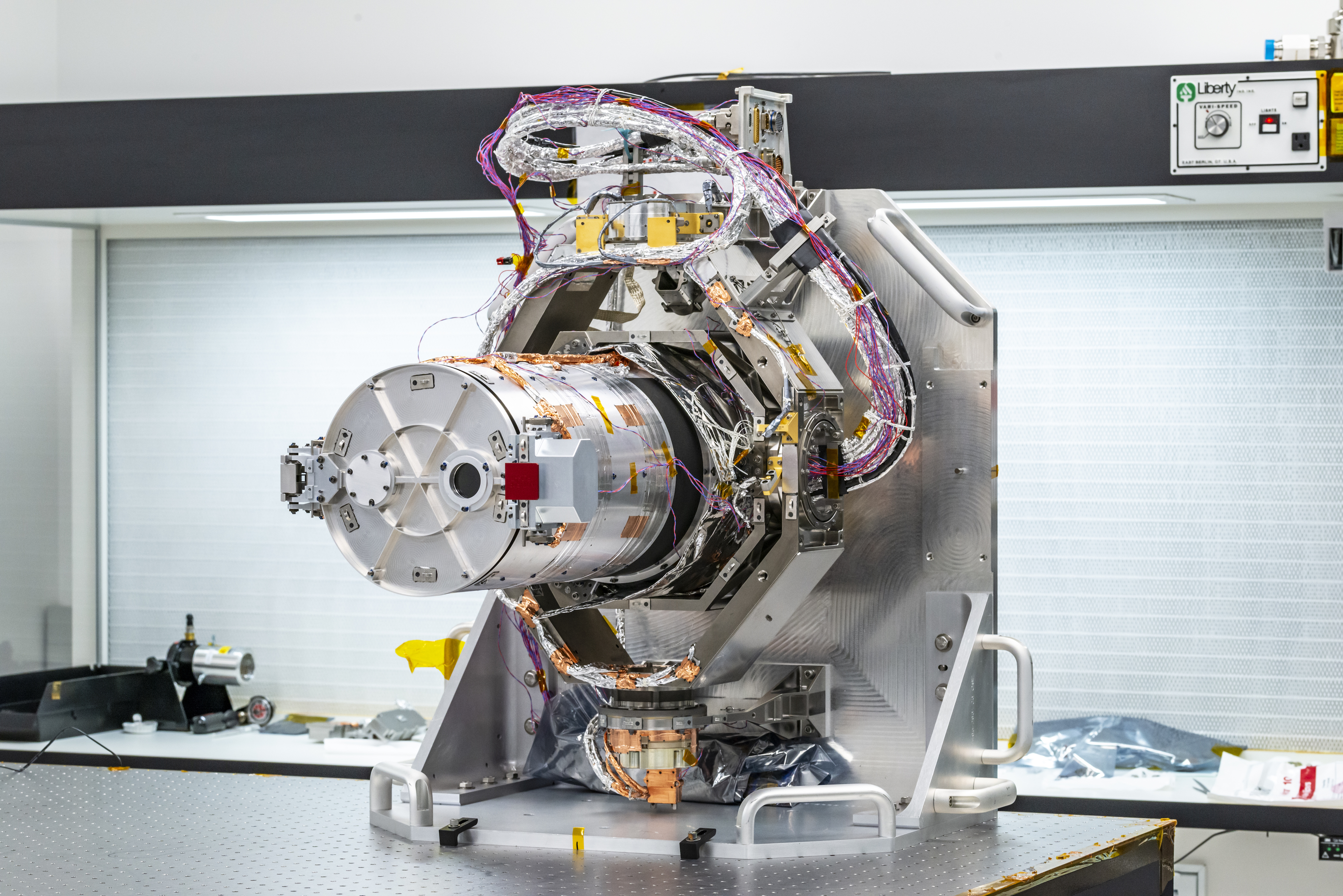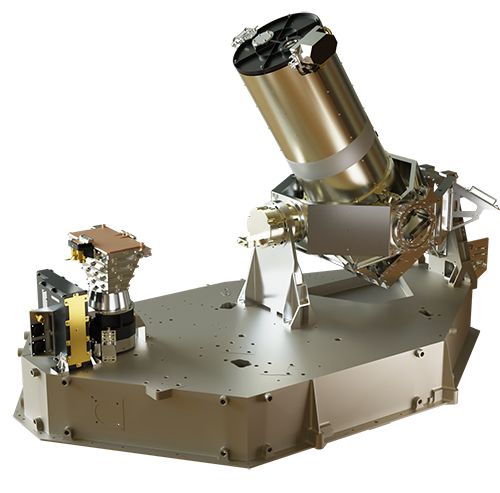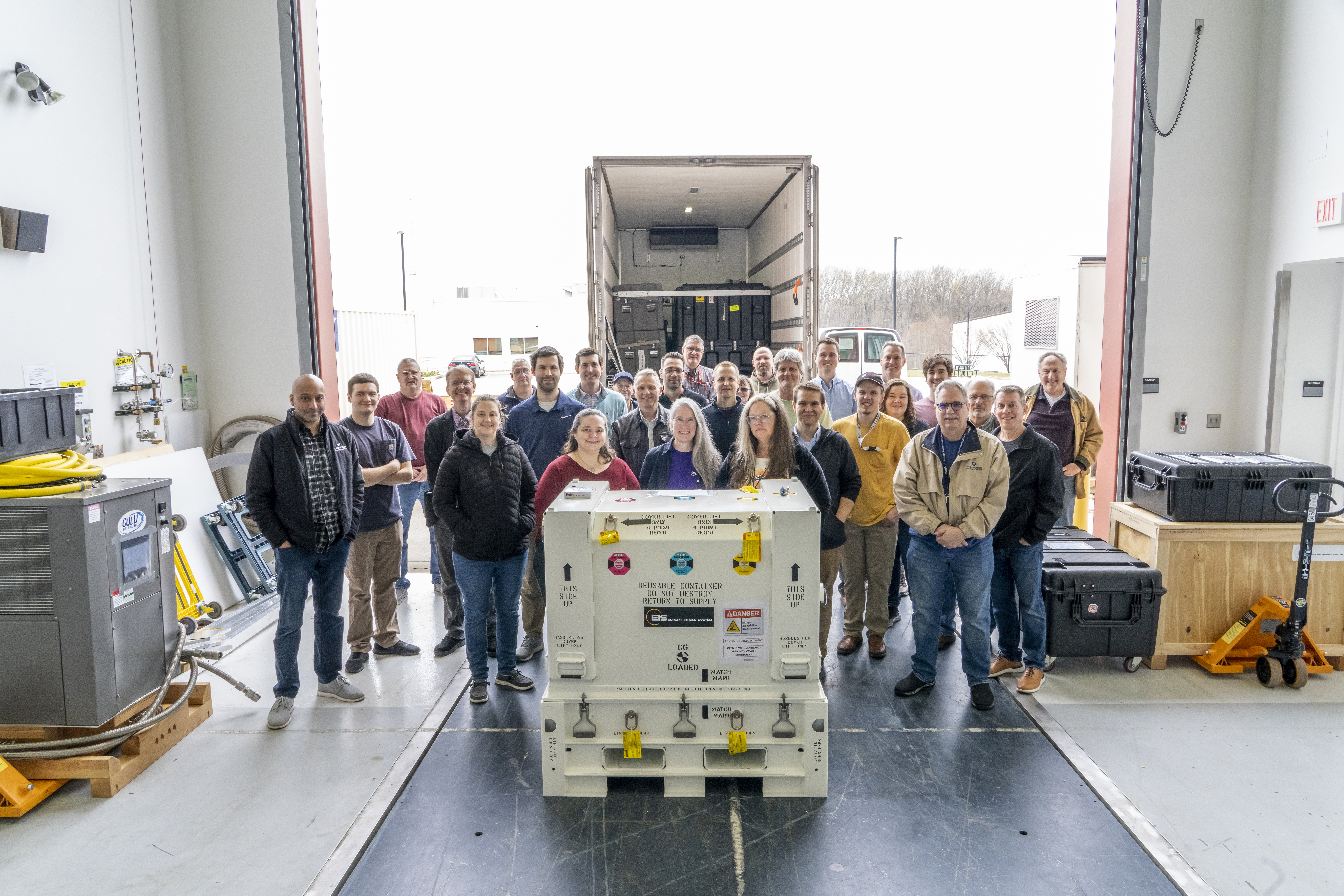
After years of work to design, build and run tests, scientists and engineers at the Johns Hopkins Applied Physics Laboratory (APL) in Laurel, Maryland, bid farewell to the Europa Imaging System (EIS) Narrow-Angle Camera (NAC) for NASA’s Europa Clipper mission. The instrument departed APL’s campus on March 31 for a cross-country trip to NASA’s Jet Propulsion Laboratory in Southern California. It safely arrived April 3 in the morning.
The delivery of the NAC marks the latest in the long list of space instruments APL has built over the last 70 years and the last of its instrument deliveries to Europa Clipper. The other components built for Europa Clipper arrived in California last summer and fall, including its propulsion module — the backbone of the spacecraft — its radio frequency module, the spacecraft electrical harness, the Plasma Instrument for Magnetic Sounding (PIMS) instrument, the EIS Wide-Angle Camera (WAC) and major assemblies of the Mapping Imaging Spectrometer for Europa (MISE) instrument.
“APL’s two Europa Clipper cameras are going to provide humanity a front-row seat as we explore the habitability of this mysterious ocean world,” said Bobby Braun, head of the Space Exploration Sector at APL. “A huge congratulations is due to the Narrow-Angle Camera team on completion of this first-of-a-kind instrument that will undoubtedly rewrite the books on our solar system’s ocean worlds. I’m so proud of the amazing members of this team who worked through myriad challenges to achieve this historic delivery.”

Slated to launch in October 2024, Europa Clipper is NASA’s largest planetary spacecraft, stretching more than 100 feet (30.5 meters) with its solar arrays deployed. It will perform nearly 50 flybys of Europa, a moon of Jupiter that almost certainly has a liquid-water ocean beneath its icy surface and very well may have all the ingredients needed for life to exist. Part of Europa Clipper’s mission is to validate those hypotheses, and doing so requires a detailed study of the surface through images.
Multiple missions have already imaged Europa, including NASA’s Voyager 1, Voyager 2, Galileo and Juno spacecraft, which returned photos of pits, knobs, craters, crisscrossing faults and frozen ice blocks. But together they’ve captured only about 15% of the surface at even moderate resolution, and very little of it in color or stereo, said APL planetary scientist Zibi Turtle, principal investigator of EIS.
The NAC is one half of EIS, providing high-resolution images of Europa’s surface while its wide-angle counterpart provides images covering a broader area. A reflecting telescope, the NAC imager uses a large mirror to direct light through a series of other mirrors and lenses onto an 8-megapixel sensor analogous to those found in today’s digital cameras and cell phones. The camera is designed to take high-resolution images focused on small portions of the landscape at as good as 1.5 feet (0.5 meters) per pixel. No icy satellite has been imaged at resolutions this fine from orbit before.
Those images will feed into a broader effort to study the many geologic features on Europa’s fractured surface. By examining the structures in detail, researchers hope to uncover past, recent or even ongoing geologic processes that formed Europa’s dynamic surface and link the features to one another to better decipher the processes happening under the surface.
“The better we understand the landforms, the better we can put constraints on the structure of the interior and whether material can be transported through the ice shell between the ocean and the surface,” Turtle said.

The NAC will also provide the necessary global-scale imaging for identifying surface deposits where plumes of water vapor may have vented (or still be venting) from the ocean below, as well as searching for direct evidence of active plumes. If present, they would indicate an important exchange between the surface and subsurface, Turtle explained. To date, however, the evidence for plumes remains ambiguous.
In California, the team will run the NAC through an additional series of tests. The camera will then be assembled into its final configuration on Europa Clipper for physical and environmental testing with the other instruments and spacecraft parts.

Related Topics
For Media Inquiries
For all media inquiries, including permission to use images or video in our gallery, please contact:
Michael Buckley
All Media Resources

